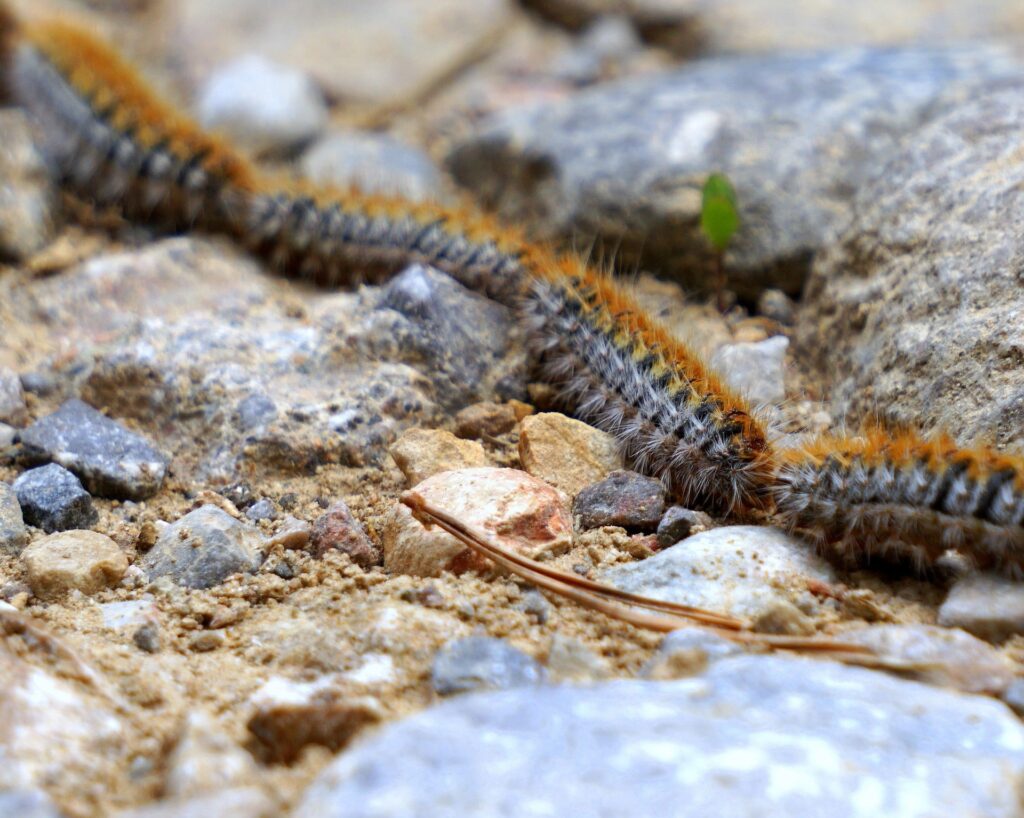In Mallorca, processionary moth caterpillars are found in pine trees and pines. In spring, they leave their cocoons and crawl towards the ground in search of food. They line up in long chains to forage for food, among other things, to keep predators away. This is where the name processionary moth (Spanish: procesionarias) comes from. Normally, processionary moths are most abundant in the months of February/March/April, but this year it seems that the low rainfall and relatively high temperatures made them leave their cocoons earlier.
What Makes Processionary Moths So Dangerous?
Processionary moth caterpillars have tiny, invisible stinging hairs that can be dislodged by the wind and fly in the air. However, if they feel threatened, they can also “shoot off” these stinging hairs deliberately. These stinging hairs contain a contact poison that can cause allergic reactions on contact with the skin. Symptoms on contact include: mainly itching, swollen or irritated eyes, but in more serious cases also breathing difficulties and severe allergic reactions.
If you have come into contact with the stinging hairs of the processionary moth caterpillars, try to resist the itching. Furthermore, you should shower off as quickly as possible and then put on fresh clothes and wash the clothes you have worn directly.
If your pet has come into contact with the processionary moth caterpillars, a visit to the vet is unavoidable in most cases. Animals can lose their tongues or even go blind due to the poison.
Control Of The Processionary Moth
In recent years, the various municipalities on Mallorca have regularly taken various measures to combat the plague of processionary moths. Experts recommend using pesticides to combat the pests between September and November. The toxic pesticide is sprayed directly into the trunk of the affected trees. In this way, only the caterpillars themselves are damaged, but not the tree or other animal species.
What Can You Do?
General tips to avoid contact with the caterpillars and their stinging hairs:
- Preferably dry your laundry indoors, this way you avoid unwanted hairs on freshly washed laundry.
- Keep your dogs on a leash when walking, as sniffing the caterpillars can have serious consequences for them.
- If possible, wear long and light clothing so that flying hairs do not come into direct contact with your skin.
If you discover nests of processionary moth caterpillars on trees in your garden, it is essential to seek the advice of an expert. You should not take action against the caterpillars on your own. Some municipalities offer a free service where the caterpillars’ nests are shot from the trees.
For more information on the control of processionary moth caterpillars, please contact your local town hall or gardener.
